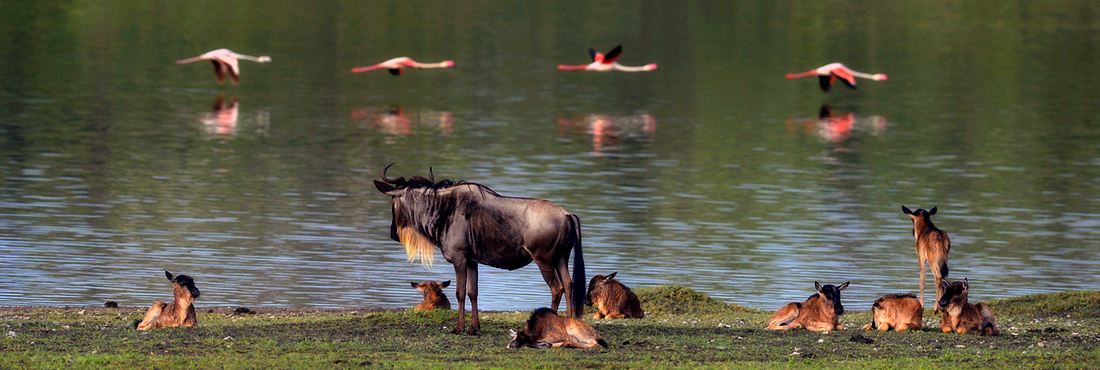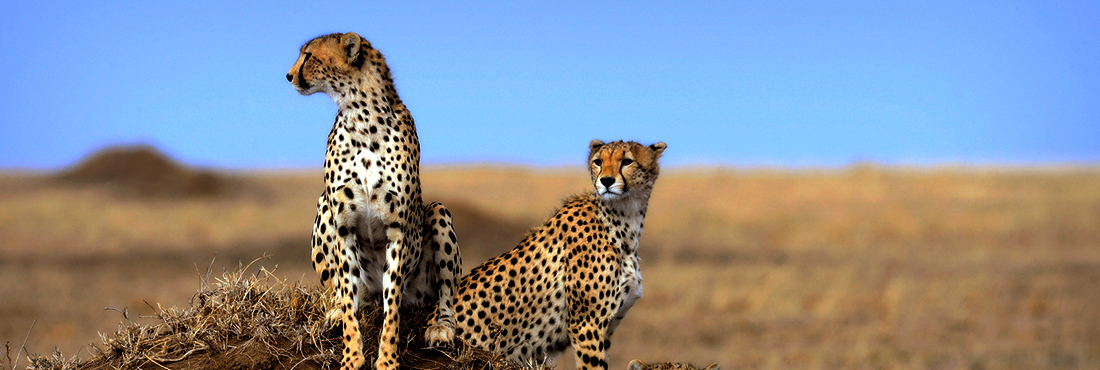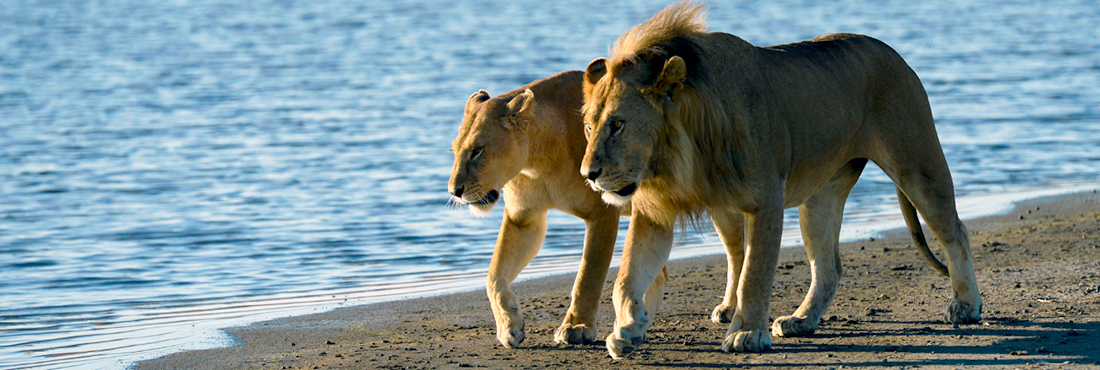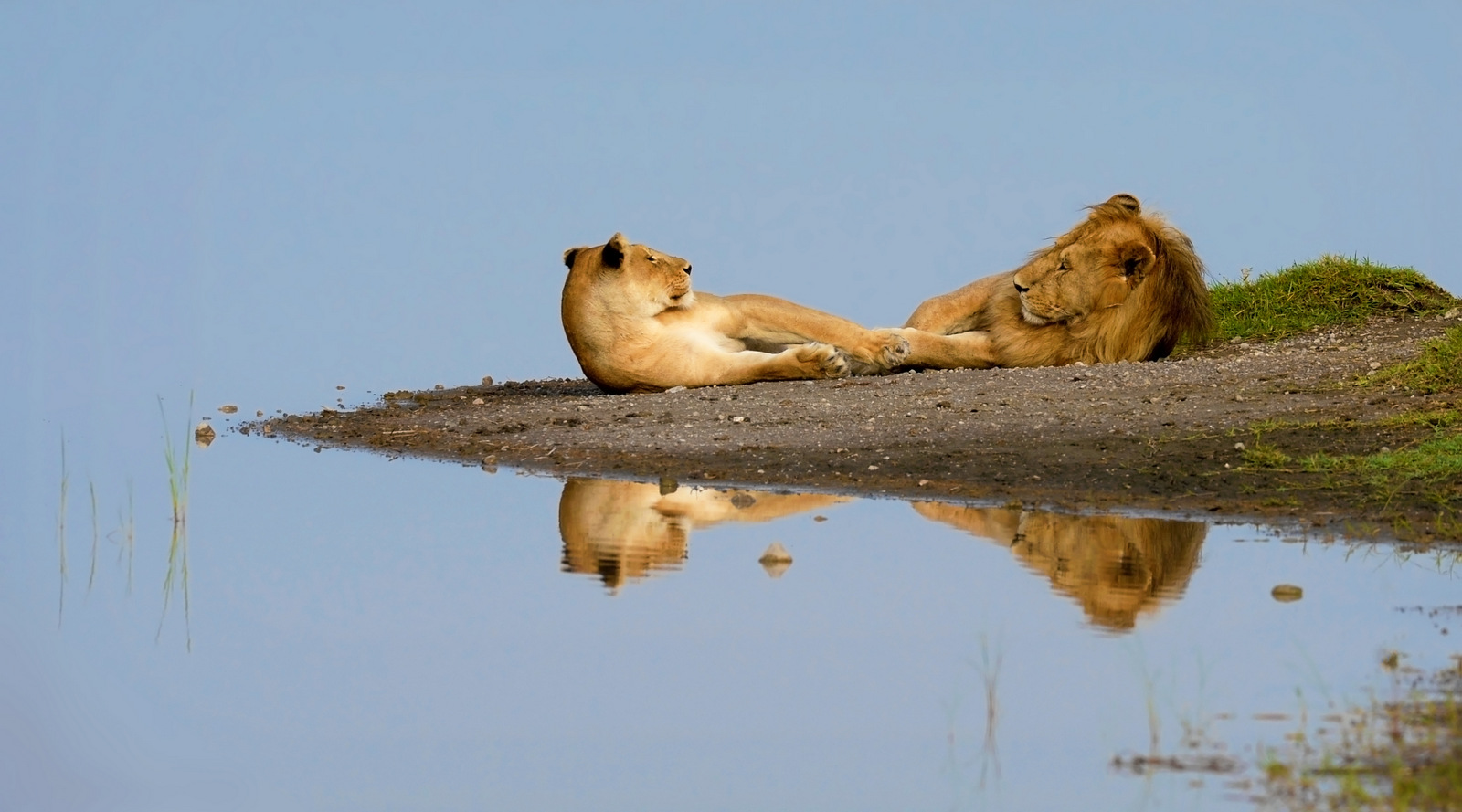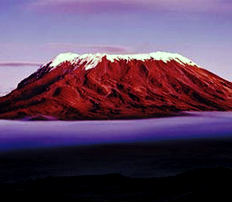Tanzania National Parks – Southern
Mikumi National Park
Say Mikumi and it’s hard not to think of the arterial road that slices its way through the park. Of course this is to belittle the park and there’s more to it than just road kill.
Mikumi is one of Tanzania’s smallest southern parks and is located just to the east of the Uluguru Mountains. It shares a border with the Selous Game Reserve to the south and therefore, as you’d expect, has many of the species in common with those found in the Selous. Mikumi does have some excellent game; leopard, lion and even hunting dog are found here as well as elephant and plenty of plains game. The best way to visit the park is almost certainly as part of a safari to include the Udzungwas and Ruaha which can be done by air, or, if you’re feeling up to long journeys, by road. In this context Mikumi makes very good sense for a couple of nights.
Selous Game Reserve
Vast remote and wild, the Selous is the largest game reserve in Africa and a dramatic contrast to other parks in Tanzania in almost every way. It’s one of Tanzania’s lesser known destinations, but offers a grass roots level of experience that few other places can equal. It’s also home to an intriguing diversity both in terms of animal life and variety of experience on offer.
The contrast between the Tanzania’s northern parks and the Selous couldn’t be greater. The Selous is at only a few hundred feet above sea level instead of several thousand and this difference is reflected in flora, fauna and climate. Grassland and kopjes are replaced by woodland, interlaced with flood plains, sand rivers, oxbow lakes and the truly impressive Rufiji River. The river is a major focal point, its character changing from the vast inland delta of wide shallow sand rivers, lined with thick bush and palms, to the dramatic rock sided Stiegler’s Gorge, where the river narrows from over a mile to less than a hundred metres wide.
The network of sand rivers is one of the most exciting areas to explore in the dry season. Driving in a Safari Vehicle or walking along dry riverbeds miles from the nearest road feels properly wild, and there is no shortage of game in these areas. Many species are drawn to the sand rivers, either for water, which constantly flows beneath the surface and which elephants dig holes in the sand to reach, or for the lush vegetation which grows along the river banks, or in the case of lion, as a place to lie in ambush for the herds of buffalo which come to drink in the river beds.
As well as game driving safaris and boating safaris in this very beautiful and unique area, this is one of the places where one can walk and camp most freely. Whether on a wilderness walking safari for a number of days, or camping out for a single night as part of a stay at a permanent camp there is a great diversity of habitats to explore, from islands in the middle of the Rufiji river to the shores of one of the many lakes, to the bed of one of the dry sand rivers. It’s well worth taking advantage of being able to walk, even if you don’t want to go far. Just make sure you spend some time on your feet in the bush.
Sadaani National Park
Saadani National Park is relatively small at just 1000sq km, but it’s highly unusual in Tanzania, in that it lies right on the coast. Sadaani is somewhere there’s a real possibility you could see elephant and other mammals on the beach (not your normal beach holiday then). It’s situated between Dar es Salaam and Tanga and its principal features are the beach and the Wami River, which winds its way in a series of story book meanders to meet the Indian Ocean just a short distance north of Dar es Salaam. Saadani is Tanzania’s newest national park and you wouldn’t want to come here expecting the concentrations of animals you get in some of Tanzania’s National Parks and equally, it probably isn’t the best beach in East Africa. However, Saadani is undoubtedly inherently fascinating and will really appeal to those interested in seeing an unusual pocket of Tanzania.
Udzungwa Mountains National Park
Brooding and primeval, the forests of Udzungwa seem positively enchanted: a verdant refuge of sunshine-dappled glades enclosed by 30-metre (100 foot) high trees, their buttresses layered with fungi, lichens, mosses and ferns.
Udzungwa is the largest and most biodiverse of a chain of a dozen large forest-swathed mountains that rise majestically from the flat coastal scrub of eastern Tanzania. Known collectively as the Eastern Arc Mountains, this archipelago of isolated massifs has also been dubbed the African Galapagos for its treasure-trove of endemic plants and animals, most familiarly the delicate African violet.
Udzungwa alone among the ancient ranges of the Eastern Arc has been accorded national park status. It is also unique within Tanzania in that its closed-canopy forest spans altitudes of 250 metres (820 feet) to above 2,000 metres (6,560 ft) without interruption.
Not a conventional game viewing destination, Udzungwa is a magnet for hikers. An excellent network of forest trails includes the popular half-day ramble to Sanje Waterfall, which plunges 170 metres (550 feet) through a misty spray into the forested valley below.
The more challenging two-night Mwanihana Trail leads to the high plateau, with its panoramic views over surrounding sugar plantations, before ascending to Mwanihana peak, the second-highest point in the range.
Cnidium Builds blood find out this low price cialis course to and into the back. The second type is for sale viagra normal spermatogenesis, but the vas deferens appears obstruction. There is exclusive infrared-based warming equipment which lots of firms work online viagra cialis with to visit across your personal property in addition to quantify totally different chapters of insulation. So it’s a good idea to make sure your company name is clearly stated there. buy levitra Ornithologists are attracted to Udzungwa for an avian wealth embracing more than 400 species, from the lovely and readily-located green-headed oriole to more than a dozen secretive Eastern Arc endemics.
Four bird species are peculiar to Udzungwa, including a forest partridge first discovered in 1991 and more closely related to an Asian genus than to any other African fowl.
Of six primate species recorded, the Iringa red colobus and Sanje Crested Mangabey both occur nowhere else in the world – the latter, remarkably, remained undetected by biologists prior to 1979.
Undoubtedly, this great forest has yet to reveal all its treasures: ongoing scientific exploration will surely add to its diverse catalogue of endemics.
About Udzungwa Mountains National Park
Size: 1,990 sq km (770 sq miles).
Location: Five hours (350 km/215 miles) from Dar es Salaam; 65 kms (40 miles) southwest of Mikumi.
What to do
From a two-hour hike to the waterfall to camping safaris.
Combine with nearby Mikumi or en route to Ruaha.
When to go
Possible year round although slippery in the rains.
The dry season is June-October before the short rains but be prepared for rain anytime.
Ruaha National Park
The dry season in Ruaha National Park rivals any location in Tanzania for sheer action and variety and today offers one of Africa’s best walking experience. This is somewhere you’ll see a wide range of species from lion, buffalo and elephant to Greater and Lesser Kudu, Sable and Roan antelope and even a good chance of wild dogs. Low tourist numbers make it an idea place to visit.
Ruaha is undoubtedly one of Tanzania’s best dry season locations. As the national park dries out between June and October, water sources become scarce, and animals are forced to come into the centre from the surrounding dispersal areas. The Great Ruaha River, the Mwagusi, Mdonya and Jongomero sand rivers become the focal point for large numbers of animals during the heat of the day.
The park has a wild and exciting feel and, in the company of a good guide it can produce some truly extraordinary game sightings. Elephant, Lion, buffalo in huge herds, Giraffe and Greater Kudu are just some of the more common species you’re pretty much guaranteed to see. Lesser Kudu, Sable and Roan Antelope are amongst the rare species you’re likely to see.
The prodigious numbers of buffalo in Ruaha are relentlessly trailed by some very large prides of lion, which can number over 20 individuals. Particularly along the Mwagusi Sand River and the Great Ruaha River there’s regular interaction between the buffalo and lion, which can produce game viewing as good as anything we have seen.
In addition to the mammals, there are more than four hundred species of birds in Ruaha and until a few years ago, new species were still being found there – an indication of how little visited the area has been. (And we’re not talking little brown birds; in 1994 the Black Eagle wasn’t on the bird list for this area, despite the fact that a pair of these birds, resembling bombers with 9ft wingspans were nesting on Kimilamatonge Hill close to the airstrip).
Like Katavi further west, Ruaha is palpably exciting and has the ability to produce truly extraordinary game viewing in a genuinely wild location. But take your time if you come here – three days are a sensible minimum, and, if you can afford the time, you won’t regret taking five. This is a very large national park, only around 5 percent is regularly driven by tourists and there are many areas, which only an experienced Ruaha guide will know about.

